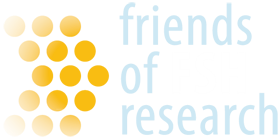Investigator: Tessa Arends PhD
Category: Research - Basic
Facioscapulohumeral muscular dystrophy (FSHD) is one of the most common progressive muscular dystrophies. FSHD is caused by mis-expression of an early embryonic transcription factor DUX4 in skeletal muscle. DUX4 is normally expressed in the early embryo (4-cell stage) but is epigenetically silenced in somatic tissues. In early embryogenesis, DUX4 regulates a significant portion of zygotic genome activation, including activation of pericentromeric human satellite II (HSATII) repeats. A major mechanism of DUX4-induced cell toxicity in FSHD muscle cells is through HSATII expression. In FSHD muscle, HSATII expression results in the formation of single-stranded RNA (ssRNA) and double-stranded RNA (dsRNA) causing nuclear protein aggregation and formation of HSATII-derived ribonucleoprotein complexes. The long-term goal of this proposal is to provide a new mechanistic understanding of DUX4-driven pathogenesis of FSHD and identify new therapeutic strategies to improve FSHD patient outcome. This proposal addresses a critical and understudied aspect of FSHD research: the role of HSATII RNA expression in FSHD pathogenesis and disease progression. The central hypothesis is that HSATII transcriptional activation and subsequent RNA aggregation create molecular sinks that sequester nuclear regulatory proteins, amplifying DUX4-driven cellular dysregulation. The specific aims are: (1) to identify the components of HSATII-derived ribonucleoprotein complexes and assess their functional impact on cellular processes, and (2) to uncover the molecular mechanisms governing HSATII regions. This research is pivotal for the field as it uncovers a previously unexplored mechanism in FSHD pathogenesis, offering new insights into the role of satellite RNA in disease progression and potentially revealing novel therapeutic targets to mitigate DUX4-driven cellular dysregulation.






Connect with us on social media